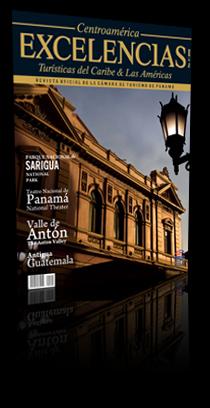Ruben Blades: the Vision of a New Century
Panama tries to blow some fresh air into tourism development with the revamping of the Panama Tourism Institute (IPAT) in virtue of Decree Law 4 dated February 27, 2008, which is very much in sync with modern trends that must rule this economic powerhouse in the country. “IPAT is not a ministry or a bureaucratic entity, but an incomemaking body. IPAT can be construed as something similar to the Canal Authority,” Panama’s Tourism Minister Ruben Blades said during a conversation held in March at the Conference Hall of Panama’s National Journalism Council (CNP).
Mr. Blades, a celebrated songwriter and singer, was tapped by President Martin Torrijos to lead the country’s tourism sector. Since then, he’s conducted a hardworking effort to reposition his homeland in terms of investments, infrastructure and personnel training, let alone paint a brighter picture of his country’s tourism overseas. “We used to have an administration completely based on the basics of the 20th century, that is, the 1960s. How can we meet new goals in the 21st century? We had a problem with that because we needed to enact the new law and get the necessary support,” he added.
In the same breath, a new Tourism Development Master Plan was passed in virtue of Decree Law 4 dated February 27, 2008, “a new law that’s going to shed far more light on areas that are key to us in order to clinch efficiency and service quality.” The new Tourism Act will open up a permanent office for the Tourism Development Master Plan, a move that guarantees the assessment of new goals and empowers the next Panamanian administration to follow up on the Plan.
In this respect, Minister Blades explained that “the former plan and its goals, from 1992 to 2002, didn’t have the possibility of being gauged. Goals could be as noble and embracing as they got, but no one ever checked that out and found out whether they were working or not. Why? Because there was no such thing as a permanent office. In addition, a 10-year master plan like this implies that the following government will be picking up where the previous administration left off. That is, build on the early achievements.”
As to international advertising campaigns, this is what he had to say: “We’ll earmark $39.5 million over the next five years for promotion overseas. In this case, IPAT determines where the money goes to and why. That’s a way of assessing the going of the campaign. At the same time, we’re separating the domestic campaign from the external campaign, so everything won’t rest on the shoulders of just one company.”
As far as current challenges are concerned, Mr. Blades mentioned the need to build new airport infrastructure in order to widen passenger flows, step up promotion in different travel destination, improve personnel and staff training for the new jobs to be created, prevent tourist attraction areas from being affected by mining, and make Kuna and Embera Indians sign up for training courses and projects.













